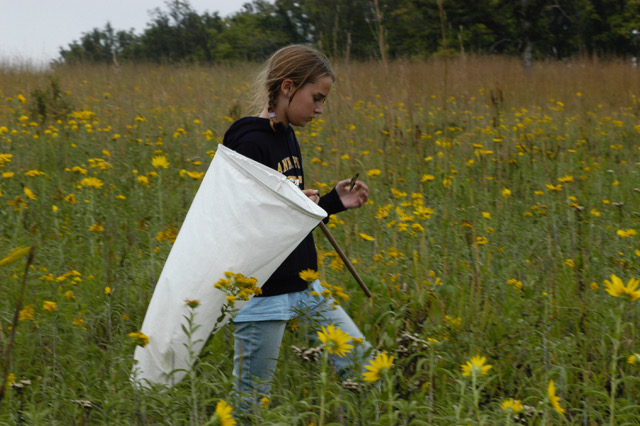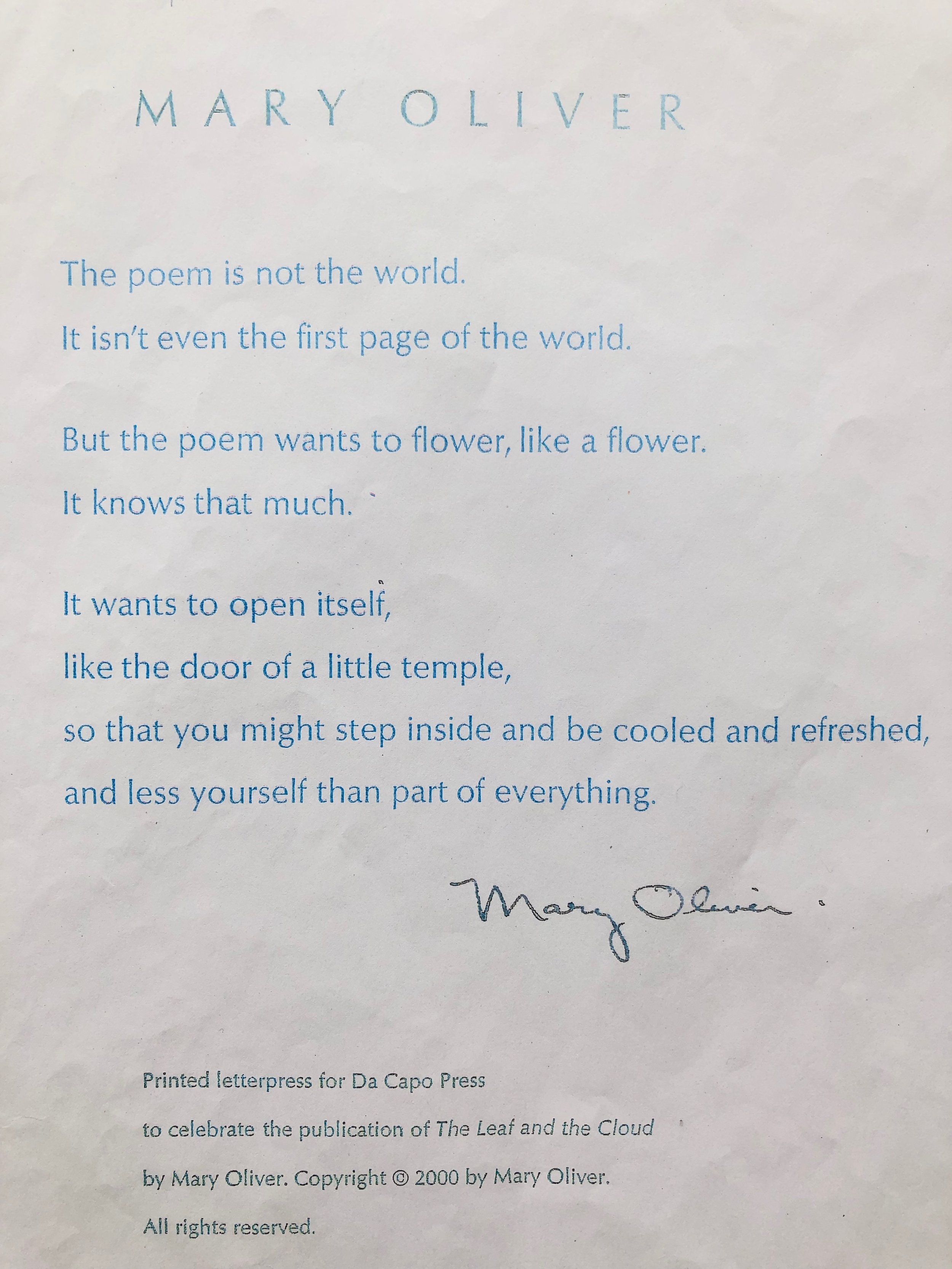The College School Butterfly Project at Shaw Nature Reserve
On the morning of January 17th, when poet Mary Oliver died, I began to see notices, tributes, and quotes from her best known poems show up across my screen from the press and from friends and colleagues. Oh dear. One of my life muses. One of the people whom I felt that I somehow knew personally because her poems are like letters. Because her poems are directed to all of us, in a straightforward way. She said that, “poems are for anyone and everybody,” and that, “poems mustn't be fancy.”
My focus as an educator has always been on the creative arts and the natural world…on child development and the arts, on art, writing and environmental education, as we used to call it. For me, the most important thing has always been the marriage of the wonder of our imagination with the beauty of the world. In her book of essays and poems, Long Life, Mary Oliver writes, How shall I live? What does it mean that the earth is so beautiful? And what shall I do about it? What is the gift that I should bring to the world? What is the life that I should live?
Mary Oliver posed these and so many essential questions as in “A Summer Day,” Doesn't everything die at last, and too soon? Tell me, what is it you plan to do with your one wild and precious life? My response has been to live as an educator who believes in the beauty all around us and in the strength, intelligence and creativity of children…to be an educator who loves life, the world, and children and continues to love learning in a way that is whole and beautiful.
College School fifth graders at Shaw Nature Reserve
The College School, where I taught and served as curriculum coordinator for almost 20 years, focuses on whole, integrated learning, field studies, the arts, and active, exciting learning for everyone. I always felt that Mary Oliver was the perfect poet laureate for The College School, with her presence and full attention on animals, birds, insects, weather, the natural world and the way that she wrote her observations and feelings into poems that she says could be, “like prayers, or songs.”
When I was working with the fifth grade one year, in 2003, I helped with a long project on monarch butterflies. This was and is still, as far as I know, a flagship project for the fifth grade. The fifth grade students make their own nets, chase and tag butterflies in the prairies at Shaw Nature Reserve, hatch their own monarch eggs, observe the monarch life cycle, release the butterflies and track their migration. Until the year I worked with them, they had not devoted much time to drawing with care and with high quality materials… the butterflies, the cycle of their life, and in the field. And, they had never written poetry.
Fifth Grade monarch portraits
I carry with me in my heart the message of Vea Vecchi, long time atelierista in Reggio Emilia and a life time mentor of mine…learning without the aesthetic and poetic dimension is not complete, not fully developed; it is impoverished. I thought the time had come to bring aesthetic and poetic ways of learning into the center of the project and the teachers agreed. Mary Oliver says creativity is always there but we have to make an appointment with it, regularly, or it gets tired of waiting…or just gets tired.
We started by reading Mary Oliver…”A Summer Day,” “One or Two Things,” “The Sunflowers,” “When I am Among theTrees,” “Red Bird”…a poem every day. We asked the fifth graders to remember specific lines that struck them, to say those lines back to all of us. They began to love the lyrical language, the names of things, and they began to realize that they wanted to write also. And we did.
Following the life cycle of the monarch
The students wrote a letter to Mary Oliver and included their poems, saying that they had been inspired by her poems and her voice. Here is one of the poems that we sent by Max Gotterman. (Max is now 26 years old!)
In the golden plains, butterflies soar.
A soft breeze ripples my shirt.
I walk through open fields, stalking the monarch.
She is determined to find green milky milkweed, to leave an egg,
To begin a great cycle.
The egg splits open, a chewing mouth begins to devour, the chubby larva peels off its skin.
Ripe green chrysalides hang like raindrops, hang like ornaments, one after one,
Waiting their turn to become a flying stained glass window.
Mary Oliver wrote back to us on February 24, 2003. I conclude with her letter because, after all these many years, it is such good advice for all of us. And because, it is such an honor to have a letter from this most beloved and wise poet whom we will always remember.
Dear Class,
Thank you, and your teachers too, for sending me your poems about monarchs, and with the influence of my own butterfly poem. Of course I like them! so much thought, and color and action! I think probably you read the Sunflower poem too, didn’t you? I caught a bit of that flavor also.
Keep on writing, and feeling, and responding to the world, both the writing one and the actual one. And don’t forget to run around and jump a lot, that’s important too.
Here is a more recent poem for you, to say my thanks. It’s called a broadside, when one poem is printed in a fancy fashion like this one.
Love to you,
Mary Oliver






